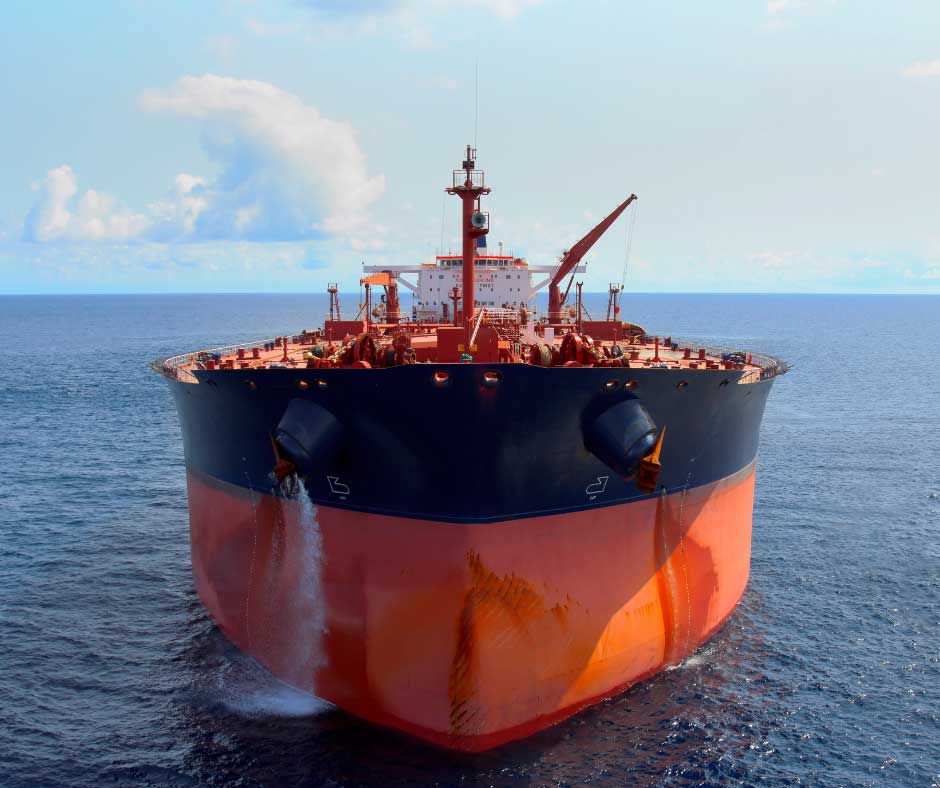Separating Seafaring Fact From Fiction In Netflix’s “Leave The World Behind”
December 21, 2023
Tweet
By Taylor Bounds
In the first twenty minutes of Netflix's new movie, "Leave The World Behind," an oil tanker runs aground on the coast of Long Island in an area full of beachgoers. Explained by the movie as "something to do with their nav system," this scene is one of the first indicators of a greater problem: a nationwide power failure. According to the movie, this is not an isolated incident, but one of several groundings along the east coast.
Capt. Wade Howell '02, master of the TS Kennedy, sat down with bldg. 311 to discuss the likelihood of an event like this.
If there was a total blackout like in the movie, what systems are in place to keep something like this from happening?
Every ship can have a blackout, just like on land, but there are safeguards in place that will limit this blackout time to a few minutes in most cases. The ship has a backup uninterruptible power supply, or UPS, that can provide power and automation on the emergency diesel generator that will start when a ship experiences a loss of power. When the generator starts, it will provide basic lights, communications and navigation, but will not always have propulsion to move the ship forward.
What kind of navigation system would you typically find on a commercial ship? Do ships ever experience navigation system failures?
Modern ships maintain a full interconnected bridge system that shares information between radars, GPS and electronic chart displays. As with any computer system, it can develop bugs, and a signal loss can shift the system. Over the development of these systems, manufacturers have developed alarms and visual messages to display when a loss of the input sensors occurs.
However, even with all the technology available, the mariner is the true failsafe, using the systems to make sure everything makes sense. This is typically accomplished by comparing the old systems of celestial and terrestrial navigation techniques with the modern equipment.
How did people navigate oceans and coastlines before electronic navigation?
Throughout history, people have used the movements of the sun and stars. When you know your rough latitude and longitude, you can use the position of the heavens and mathematical tables to figure out your location. Closer to land, you can navigate the coastline by land features compared to the chart you are sailing on.
The university offers courses in terrestrial, celestial and electronic navigation. These classes cover all the forms of navigation that are in use in today's industry.
Running a ship aground on a busy beach seems like a worst-case scenario. Are there any situations where this would be the correct response?
Depending on the situation, the area around you, cargo onboard and other dangers, it might be appropriate. Generally speaking, it's preferred not to run aground, but it might cause less environmental damage if you can keep the cargo from spilling into the water. Think of a tanker carrying heavy crude oil: depending on the conditions, it's safer than letting it sink with less impact.
If a beach is full of people, you should avoid that. However, if you have a loss of steering systems (separate from navigation system), there are backup systems that should prevent a total loss, but you might not have a choice if you are close to land and that's where the ship is heading before you can regain control.
So losing electronic navigation capabilities isn't a typical reason to ground a ship?
NO, not for loss of navigation. Although we don't know exactly what happened with the ships in the movie, we can likely chalk it up as movie magic.
###
Media contact:bounds@tamu.edu
More:
Read more about Business, Law & Society
Read more about Health & Environment
Read more about Science & Technology
Read more about Marine Engineering Technology
Read more about Maritime Transportation
Read more about Texas A&M Maritime Academy